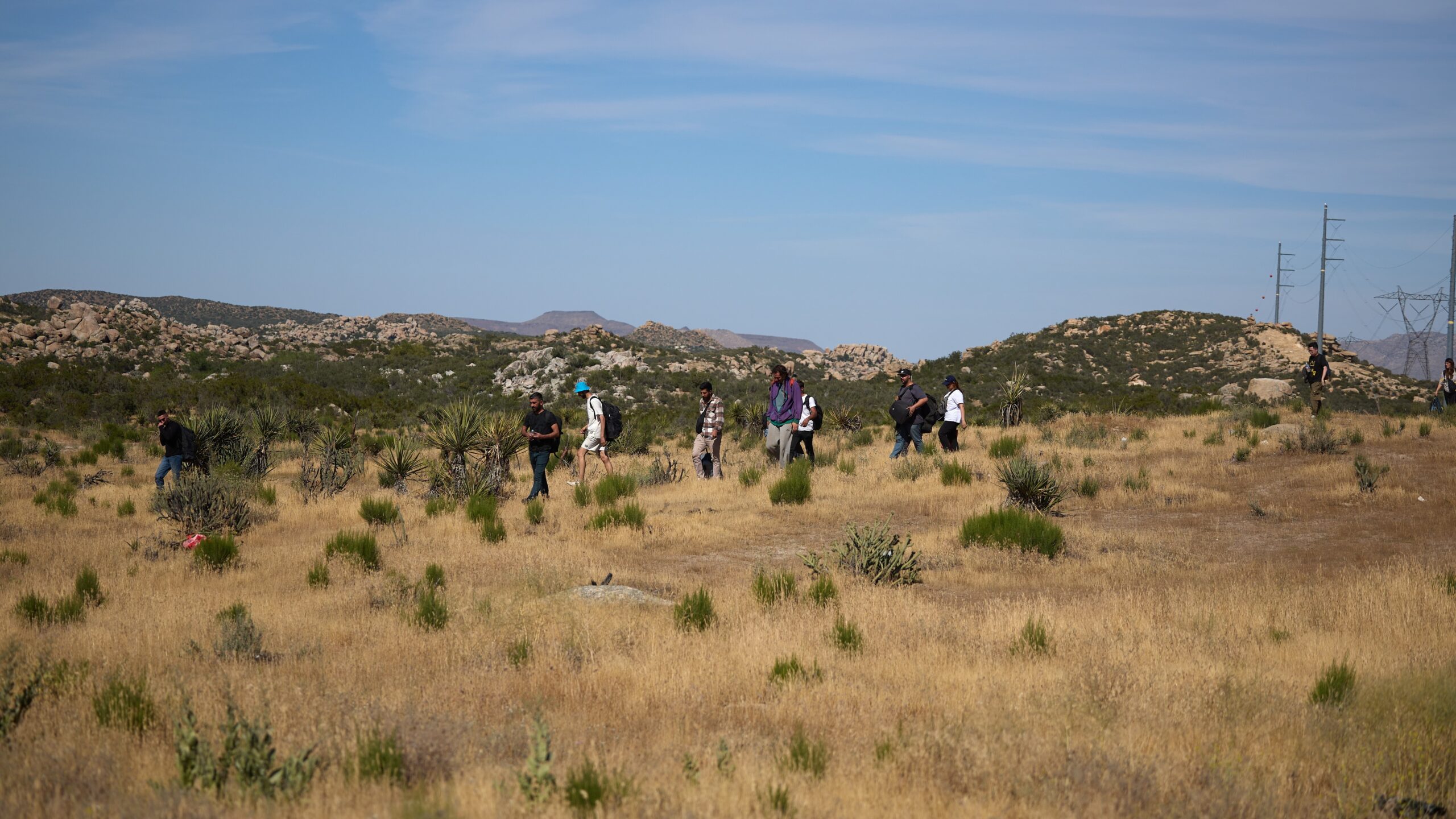Illegal immigration to the United States from the southern Mexican border has been a hot topic during this presidential election year as both Democrats and Republicans continue to blame each other for the crisis. The numbers of undocumented foreigners have risen to unprecedented levels as thousands are now sleeping on the streets of sanctuary cities because public officials are no longer capable to deal with the situation. Among those who arrive at the border are unaccompanied minors. Most of them travel with smugglers and are often sold to human traffickers and situations of forced labor or prostitution.
There is also the problem of crime, such as the smuggling of fentanyl from Mexico, which has cost the lives of more than a quarter million Americans since 2018. The number of fentanyl overdoses have more than doubled between 2019 and 2022. Indeed, the problem of illegal immigration has gotten so much out of hand that even Senator Bernie Sanders, the most prominent left-wing politician in America, said: ‘We have a crisis on the border [that] we have to crack down on’.
Identifying the Undocumented
Illegal immigrants, notwithstanding former President Donald Trump’s characterizing them as ‘criminals and mentally people who are poisoning the blood of our country’, are classified as all foreign-born non-citizens who are have entered the U.S. without inspection or were admitted temporarily and remained past the date they were required to depart. Some of them are beneficiaries of the Temporary Protected Status and the Deferred Action for Childhood, or other forms of prosecutorial discretion. Others slipped through the border unnoticed or entered the U.S. legally but overstayed their visas.
Illegal border crossings, which are measured by apprehensions at the southern border, were reportedly 14.7 per cent higher in Trump’s final year in office compared with the last full year of Obama’s term in 2016. Encounters of those trying to enter the U.S. without authorization have gone up significantly under the Biden–Harris administration. As of February of this year, government statistics show that in the initial processing of millions of encounters, 2.5 million people have been released into the U.S. and 2.8 million have been removed or expelled. While the exact number is impossible to furnish, according to the Office of Homeland Security Statistics, as of 1 January 2022, there are approximately 11 million unauthorized immigrants living in the U.S., which is an increase from 10.5 million in January 2020 —
44 per cent of unauthorized immigrants in 2022 were from Mexico.
In addition, through December 2023, about 500,000 new immigrants were paroled into the U.S. through two federal programs—the Cuban, Haitian, Nicaraguan, and Venezuelan (CHNV) program and Uniting for Ukraine (U4U). Groups like these have normally been considered part of the unauthorized immigrant population, but almost none of them appear in the 2022 estimates. In the end, exact numbers cannot be precisely determined since some new arrivals leave the country every year, some die, and some gain lawful status. According to new figures from the Department of Homeland Security, as a result of President Joe Biden’s recent executive order to restrict asylum seekers, the number of people asking for haven in the U.S. has dropped by 50 per cent since June—Democrats argue had Donald Trump not convinced Republican lawmakers in May to kill a bipartisan bill that would have given the president new powers to shut down the border, the present situation would have been more manageable.


A Tenable and Controversial Solution
When then President Donald Trump partially built a wall along the U.S.–Mexican border to halt the flow of migrants, he merely expanded on what his predecessors had unsuccessfully attempted, beginning with Presidents Franklin D. Roosevelt and Harry S. Truman. Both had built fences to curb immigration along the U.S.–Mexican border. In 1951 President Truman’s Commission on Migratory Labor released a report blaming low wages in the Southwest and social ills on illegal immigration calling it ‘an invasion’. After building fences for decades to stop animals, the federal government shifted its focus when people began migrating in significant numbers from south to north in the 1940s and 1950s.
In 1954, President Dwight S. Eisenhower, under Operation Wetback—‘wetback’ is a slur used to refer to Mexicans crossing the border through the Rio Grande—the U.S. government deported approximately 1.3 million Mexicans, though the figures are highly contested. They were originally in the country as part of the Bracero Program, an agreement between the Mexican and U.S. governments during World War II that allowed Mexican nationals to work in the U.S. under short-term contracts, in exchange for stricter border security and the return of illegal Mexican immigrants to Mexico.

President Bill Clinton had fences built alongside urban areas when the problem reemerged—some hold that this was a result President Ronald Reagan’s granting amnesty to 3 million illegal aliens in 1986. Clinton also signed an immigration reform bill in 1996 which facilitated the U.S. to deport people convicted of minor infractions and crimes committed by lawful permanent residents, which included thousands of Central American gang members across American cities.
The (2nd) Bush and Obama administrations followed up on what President Clinton did by constructing a wall.
While Trump built 458 miles of new wall, it was constructed in places where some kind of barrier already existed.
The ultimate fallacy of the wall is that in most illegal immigrants cross the border through the Rio Grande where it is physically impossible to build a wall because it would mean that the U.S. government would have to confiscate private property from U.S. citizens.
Trump has proposed a final solution to the problem: if elected, he would close the southern border and deport all undocumented aliens:
‘We are going to start the largest mass deportation in the history of our country because we have no choice, it’s not sustainable.’
Unlike Operation Wetback, when the U.S. government knew where every Mexican to be deported was living or working, perhaps a total of 300,000 were sent back to Mexico. Trump, instead, wants to deport the 11 million, and this is a modest figure. How is he going to do that? He can implement the Insurrection Act of 1807, which empowers the president to deploy military and National Guard troops within the U.S. in particular circumstances, such as to suppress civil disorder, insurrection, or rebellion. To have troops and tanks in the streets of America would be a political fiasco, at best.
Most wishing to migrate to the U.S. are seeking a better life, contrary to the regional violence, corruption, and economic devastation in their home countries. If U.S. and Central American governments are able to institutionalize a ‘Marshall Plan’ as Washington had done for Europe after World War II, then perhaps a workable solution is possible. However, the U.S. needs to take the lead in this, though it would be unable to do so long as members of both Democratic and Republican Parties continue to childishly bicker with one another.
Related articles:







